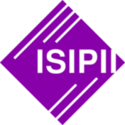Rendahnya Literasi Remaja di Indonesia: Masalah dan Solusi
Abstract
The ease of access to social media owned by teenagers is considered to be able to make teenagers spend most of their time without clear goals. On the other hand, youth are part of a digital community that participates in the progress of their country. This phenomenon is the background of this study. The goal of this research was to find a solution to the youth's low literacy rate. The method of this study is a literature review. The research findings show that in order to realize literate youth, collaboration and commitment from three important elements are needed, namely family, government, and society. The conclusion from this study is that the solution to low adolescent literacy is to realize literate youth through efforts to build high motivation for individual youth to think, read, and write, which can be built through the role of family elements. The next element is that the government, as a regulator, can play a role in issuing policies that support Indonesian families to improve literacy. The author considers that the various benefits received by adolescents through social media should be accompanied by restrictions on access to their use. Limiting access to social media can be outlined in a clear government policy. The next element is the community, which can play a role in educating and raising awareness regarding climate change and strengthening literacy for young people in Indonesia through a healthy internet campaign for young people. Communities can also build youth literacy communities and obtain assistance from the government, both at the central government and local government levels.
Keywords
Full Text:
PDFReferences
Annur, C. M. (2022). Ada 204,7 Juta Pengguna Internet di Indonesia Awal 2022. Databoks.Katadata.Co.Id. https://databoks.katadata.co.id/datapublish/2022/03/23/ada-2047-juta-pengguna-internet-di-indonesia-awal-2022
Aprilia, R., Sriati, A., & Hendrawati, S. (2020). Tingkat Kecanduan Media Sosial pada Remaja. Journal of Nursing Care, 3(1). https://doi.org/https://doi.org/10.24198/jnc.v3i1.26928
Benaziria. (2018). Pengembangkan Literasi Digital pada Warga Negara Muda dalam Pembelajaran PPKn melalui Model VCT. Jurnal Pendidikan Ilmu-Ilmu Sosial, 10(1). https://doi.org/https://doi.org/10.24114/jupiis.v10i1.8331
Calvet, L.-J. (1999). Towards an Ecology of World Languages. Polity. Danuri, M. (2019). PERKEMBANGAN DAN TRANSFORMASI TEKNOLOGI DIGITAL. Jurnal Ilmiah Infokam, 15(2). https://doi.org/https://doi.org/10.53845/infokam.v15i2.178
Fahlevi, F. (2020). Kemendikbud: Tingkat Literasi Remaja di Indonesia Masih Rendah. TRIBUNNEWS.COM. https://www.tribunnews.com/nasional/2020/09/08/kemendikbud-tingkat-literasi-remaja-di-indonesia-masih-rendah
Ferrissa, W. (2017). Tingkatkan Literasi Digital Masyarakat, Pemerintah Bikin Progam Ini. Kategori Sorotan Media. https://www.kominfo.go.id/content/detail/11952/tingkatkan-literasi-digital-masyarakat-pemerintah-bikin-progam-ini/0/sorotan_media
Gani, A. G. (2015). Pengaruh Media Sosial Terhadap Perkembangan Anak Remaja. Jurnal Mitra Manajemen, 7(2). https://journal.universitassuryadarma.ac.id/index.php/jmm/article/view/533
Helsper, E., & Enyon, R. (2009). Digital natives: Where is the evidence? British Educational Research Journal. http://eprints.lse.ac.uk/27739/1/Digital_natives_%28LSERO%29.pdf
Ilham, B. U. (2022). Harbuknas 2022 : Literasi Indonesia Peringkat Ke-62 Dari 70 Negara. Bisnisumkm.Com. https://bisniskumkm.com/harbuknas-2022-literasi-indonesia-peringkat-ke-62-dari-70-negara/#:~:text=Harbuknas 2022 %3A Literasi Indonesia Peringkat,70 negara - Portal Bisnis KUMKM
Irfansyah, & Surya, D. (2021). Membangun budaya literasi perdesaanDi Desa Pondok Kemuning Kota Langsa. Connection: Jurnal Pengabdian Kepada Masyarakat, 1(1). https://doi.org/https://doi.org/10.32505/connection.v1i1.2823
Irianto, P. O., & Febrianti, L. Y. (2017). PENTINGNYA PENGUASAAN LITERASI BAGI GENERASI MUDA DALAM MENGHADAPI MEA. Proceedings Education and Language International Conference. http://lppm-unissula.com/jurnal.unissula.ac.id/index.php/ELIC/article/view/1282
Jamun, Y. M., Wejang, H. E. A., & Ngalu, R. (2019). PENGARUH PENGGUNAAN GADGET TERHADAP POLA INTERAKSI SOSIAL SISWA SMA DI KECAMATAN LANGKE REMBONG. JIPD (Jurnal Inovasi Pendidikan Dasar), 3(1). http://jurnal.unikastpaulus.ac.id/index.php/jipd/article/view/201
Kemdikbud, pengelola web. (2022). Perkuat Semangat Literasi Siswa, Pemerintah Sediakan 2,9 Juta Buku untuk Daerah 3T di NTT dan NTB. Siaran Pers Kementerian Pendidikan, Kebudayaan, Riset, Dan Teknologi Nomor: 404/Sipers/A6/VII/2022. https://www.kemdikbud.go.id/main/blog/2022/07/perkuat-semangat-literasi-siswa-pemerintah-sediakan-29-juta-buku-untuk-daerah-3t-di-ntt-dan-ntb
Kemendikbud. (2022). TUJUAN GERAKAN LITERASI NASIONAL. https://pmpk.kemdikbud.go.id/read-news/tujuan-gerakan-literasi-nasional
Kholipah, S. (2021). Upaya Pemerintah Meningkatkan Literasi di Indonesia. Kompasiana.Com. https://www.kompasiana.com/siti01511/61455f5106310e0624505192/upaya-pemerintah-meningkatkan-literasi-di-indonesia
Luthfia, A. R., Alimin, N. N., Nugraheni, F., Asri, S., Alkhajar, & Shofa, E. N. (2019). PENGUATAN LITERASI PERUBAHAN IKLIM DI KALANGAN REMAJA. ABADIMAS ADI BUANA, 03(1). https://doi.org/https://doi.org/10.36456/abadimas.v3.i1.a1941
M, P. (2001). Digital Natives, Digital Immigrant. On the Horizon. MCB University Press, 9(5).
Mahdi, M. I. (2022). Pengguna Media Sosial di Indonesia Capai 191 Juta pada 2022. Databoks.Katadata.Co.Id. https://dataindonesia.id/digital/detail/pengguna-media-sosial-di-indonesia-capai-191-juta-pada-2022
Mardina, R. (2011). Potensi Digital Natives Dalam Representasi Literasi Informasi Multimedia Berbasis Web Di Perguruan Tinggi. Jurnal Pustakawan Indonesia, 11(1), 7. https://journal.ipb.ac.id/index.php/jpi/article/view/5264
Masae, V. A., Manurung, I. F. E., & SakkeTira, D. (2019). HUBUNGAN PENGETAHUAN, SIKAP, DAN AKSES MEDIA SOSIAL DENGAN PERILAKU SEKSUAL REMAJA PEREMPUAN. Media Kesehatan Masyarakat, 1(1). http://ejurnal.undana.ac.id/index.php/MKM/article/view/1522/1195
Meilinda, N., Malinda, F., & Aisyah, S. M. (2020). LITERASI DIGITAL PADA REMAJA DIGITAL (SOSIALISASI PEMANFAATAN MEDIA SOSIAL BAGI PELAJAR SEKOLAH MENENGAH ATAS). Jurnal Abdimas Mandiri, 4(1). https://doi.org/http://dx.doi.org/10.36982/jam.v4i1.1047
Muttaqin, Z., & Winata, A. (2020). Pengaruh Media Sosial (Facebook) Terhadap Remaja di SMA dan MA Pondok Pesanteren Nurul Jannah Ampenan Kota Mataram. JPIn: Jurnal Pendidik Indonesia, 3(1). https://doi.org/https://doi.org/10.47165/jpin.v3i1.86
Nurdiansyah, M. F., & Lestari, T. (2021). Persepsi dan Sikap Anak Tentang Media Sosial dalam Pemanfaatannya untuk Belajar. Jurnal Pendidikan Tambusai, 5(1). https://www.jptam.org/index.php/jptam/article/view/1139
Pratama, B. A. (2019). Korelasi Penggunaan Media Sosial terhadap Sikap Antisosial pada Remaja Sekolah Menengah Pertama di Kabupaten Sukoharjo. Indonesian Journal on Medical Science, 6(2). http://ejournal.poltekkesbhaktimulia.ac.id/index.php/ijms/article/view/180
Pratama, B. A., & Sari, D. S. (2020). Dampak Sosial Intensitas Penggunaan Media Sosial Terhadap Kesehatan Mental Berupa Sikap Apatis di SMP Kabupaten Sukoharjo. Gaster, 18(1). https://doi.org/https://doi.org/10.30787/gaster.v18i1.487
Salsabila, U. H., Sari, L. I., Lathif, K. H., Lestari, A. P., & Ayuning, A. (2020). PERAN TEKNOLOGI DALAM PEMBELAJARAN DI MASA PANDEMI COVID-19. Al-Mutharahah: Jurnal Penelitian Dan Kajian Sosial Keagamaan, 17(2). https://ojs.diniyah.ac.id/index.php/Al-Mutharahah/article/view/138/105
Sinaga, A. B., Limbong, F. A. A., & Br, S. W. S. (2021). PENINGKATAN LITERASI MELALUI PENERAPAN DEAR DI PANTI ASUHAN RAHPIA SIMALINGKAR B MEDAN. Jurnal Abdimas Mutiara, 2(2). http://e-journal.sari-mutiara.ac.id/index.php/JAM/article/view/2144/1490
Street, B. (2001). “Introduction”. Literacy and Development: Ethnographic Perspectives. Routledge.
Supratman, L. P. (2018). Penggunaan Media Sosial oleh Digital Native. Jurnal ILMU KOMUNIKASI, 15(1). https://doi.org/https://doi.org/10.24002/jik.v15i1.1243
Suwanto, S. A. (2015). ANALISIS LITERASI INFORMASI PEMAKAI TAMAN BACAAN MASYARAKAT. Jurnal Kajian Informasi & Perpustakaan, 3(1). https://doi.org/https://doi.org/10.24198/jkip.v3i1.9492
Suyono, H. (2017). Implementasi Gerakan Literasi Guru Sekolah Pada Pembelajaran Tematik Sekolah Dasar. Jurnal Sekolah Dasar. Syaibani, R. (2012). Studi Kepustakaan. Universitas Sumatera Utara.
Utami, A. S. F., & Baiti, N. (2018). PENGARUH MEDIA SOSIAL TERHADAP PERILAKU CYBERBULLYING PADA KALANGAN REMAJA.
Cakrawala, 18(2). https://doi.org/https://doi.org/10.31294/jc.v18i2.3680
Wahyuni, N. C. (2016). PANDUAN PROGRAM LITERASI INFORMASI PERPUSTAKAAN. https://www.researchgate.net/profile/Nur-Cahyati/publication/310799828_PANDUAN_PROGRAM_LITERASI_INFORMASI_PERPUSTAKAAN/links/5838002008aed5c614880b39/PANDUAN-PROGRAM-LITERASI-INFORMASI-PERPUSTAKAAN.pdf
DOI: https://doi.org/10.20961/jpi.v8i2.66437
Refbacks
- There are currently no refbacks.

This work is licensed under a Creative Commons Attribution-NonCommercial-ShareAlike 4.0 International License.




.png)
.png)









1.jpg)
